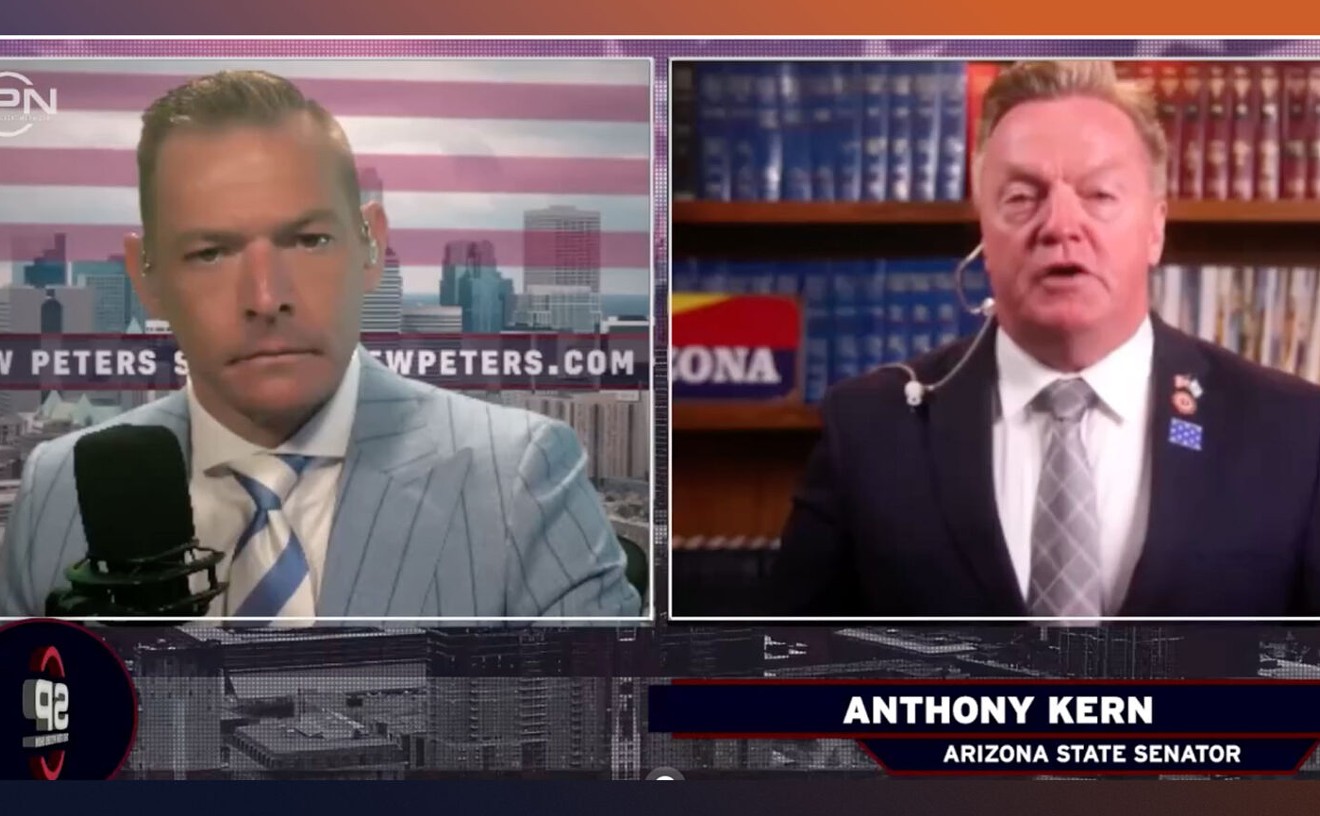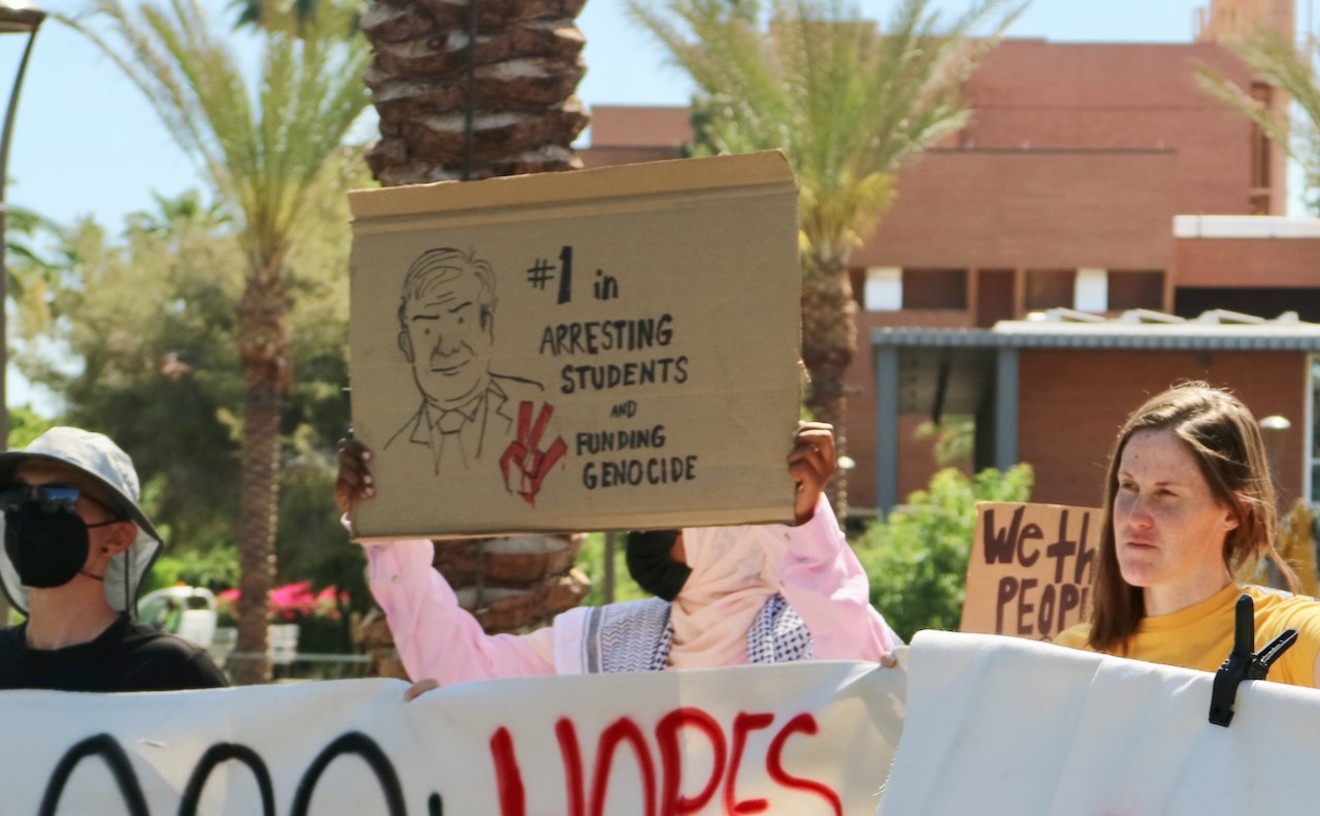Miner Regulations
Arizona copper kings are enthusiastic about a pending mine-reclamation law--because they wrote it
By Terry Greene
Before Arizona's 42nd Legislature shuts down this month, it is expected to quietly pass a law that runs counter to all the principles of regulatory reform espoused by its Republican majority.
Sponsored by Senator Jim Buster, a Yuma Republican, Senate Bill 1380, the "mine-reclamation law," creates a new state bureaucracy: the Division of Mined Land Reclamation in the State Mine Inspector's Office. The division, which has a start-up cost of $200,000, will impose more regulation on an industry that detests government oversight--the state's copper mines.
Critics say the law is actually a fig leaf, designed to shield the industry from federal regulators, who presumably would call for stricter mine-cleanup standards.
The proposed mine-reclamation law, slated to go into effect in 1997, refines and puts into action an unenacted 1994 law, also sponsored by Buster. The earlier version of the law had yet to be funded and assigned to an agency that would enforce it.
The more recent Buster bill requires some mine owners to file a reclamation plan with the state mine inspector, ostensibly to ensure that mine owners prettify mountains of toxic tailings and deep pits carved into the earth. (Owners of mines on private property had previously fought hard for the right to reclaim mine sites without state interference. And some have gone so far as to transform tailings piles into cattle ranches and planned housing developments with golf courses.)
So why are the mine owners, who oppose unnecessary regulation, agreeing to it?
And why in the world is Buster, a dyed-in-the-wool regulatory reformer, sponsoring a law that seems to contradict everything he stands for?
The answer is as strange as the law itself.
The mining industry actually wants the law. In fact, Buster's 1994 law was drafted by industry lobbyists. And the mining industry was the driving force behind this year's fine-tuning legislation, which will finally get the program on its feet.
The reason the mining industry is uncharacteristically enthusiastic about such a law is quite simple: It hopes to avoid federal scrutiny and regulation.
Buster's original 1994 bill was written at a time when Democrats in Congress were pushing for vigorous reform of the nation's mining industries. Capitol Hill Democrats repeatedly noted that Arizona was the one state that had no reclamation law governing mines on private property, and they threatened to impose strict federal regulations on the state.
Rather than be forced by the feds to follow a more public process, lobbyists from the Arizona Mining Association wrote their own law. (Jim Bush, a lobbyist for the association who actively promoted the reclamation bill, did not return New Times' phone call.)
Critics say the Buster bill accomplishes little.
It applies only to mines that were closed after 1986 and mines that are very large--they must be on sites of 50 contiguous acres of disturbed land. In fact, the new law only applies to about 17 mines owned by the largest companies in the state: Magma, Phelps Dodge, Cyprus, Asarco.
These large mine companies and their lobbyists managed to fight off an effort by the Sierra Club and other environmental groups to increase reclamation-filing fees paid by the owners of big mines, with the added proceeds dedicated to the reclamation of thousands of small, abandoned mines across the state. (The Buster bill says mine owners must pay only a one-time fee of $3 per acre of land to be reclaimed.)
Further, the mine owners have designed the bill to "limit public participation" in a way that is "pretty troubling," says Jim Lyon, vice president for policy of the Mineral Policy Institute, a Washington, D.C., watchdog group that lobbies for reform of mining laws. "They have this 'trade secret' language that puts the discretion for whether or not the public receives information in the hands of the company," he says.
"On a scale of one to ten, one being the weakest possible law, this law is a one," he says. "All state reclamation laws are better across the board than Arizona's."
Critics also say the one-time state allocation of $200,000 is not nearly enough for state mine inspector Douglas Martin--whose agency previously only dealt with worker-safety issues in mines--to hire consultants sophisticated enough to pass judgment on the mines' complicated reclamation plans.
Martin, however, says he is "positive" he can do the job.
And his is the only state agency, other than the Department of Mines and Mineral Resources (which operates a museum and educates the public about the benefits of mining), that wanted the job. Officials from the chronically underfunded Department of Environmental Quality say they simply don't have the resources to do an adequate job.
"In a perfect world, we'd take over reclamation," says Dennis Turner, head of the mine unit of the DEQ aquifer-protection section, "but this is not a perfect world. We don't have the staff."
What's more, DEQ has been at loggerheads with the very lobbyists who support the Buster bill. Those lobbyists are attempting to push through other laws protecting private-property owners from "undue" environmental regulation, protecting polluters from revealing data on pollution, relaxing current standards to protect the state's underground drinking-water reserves.
Buster, an amiable insurance agent who seems truly to believe in what he does, also supports such legislation. He says he had no philosophical conflict sponsoring a bill demanding more regulation on business and more bureaucracy. The reclamation bill is in keeping with the conservative ethic, he says.
Regardless of whatever "ulterior motives" the mine owners might have in asking for the bill, he says, the notion of getting the federal government off Arizona's back while still having a reclamation law that calls for consistency in reclaimed land is good. And he says he'll tackle the issue of how to deal with abandoned mines not covered under the current law.
But at least one legislator did feel conflicted. Representative Jean McGrath, a vocal private-property-rights advocate, reluctantly voted to approve the Buster bill at a subcommittee hearing last month. "This is a very reluctant 'aye' vote," she said.
"I hate to tell people what to do with their private property."
In any case, controversy over the mine-reclamation law may be extremely short-lived. If passed, the law may only be around for two and a half years. It is scheduled to take effect in April 1997 and slated to dissolve in the year 2000 if legislators choose not to fund it.
And that, of course, may well depend on whether the mining industry fears further federal intervention.
The article "Miner Regulations" (April 18) incorrectly reported the size of mines to be regulated under a proposed reclamation law. Mines with five or more contiguous acres of disturbed land will be regulated.










